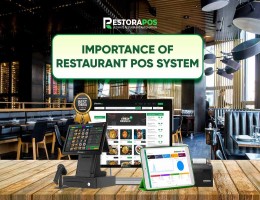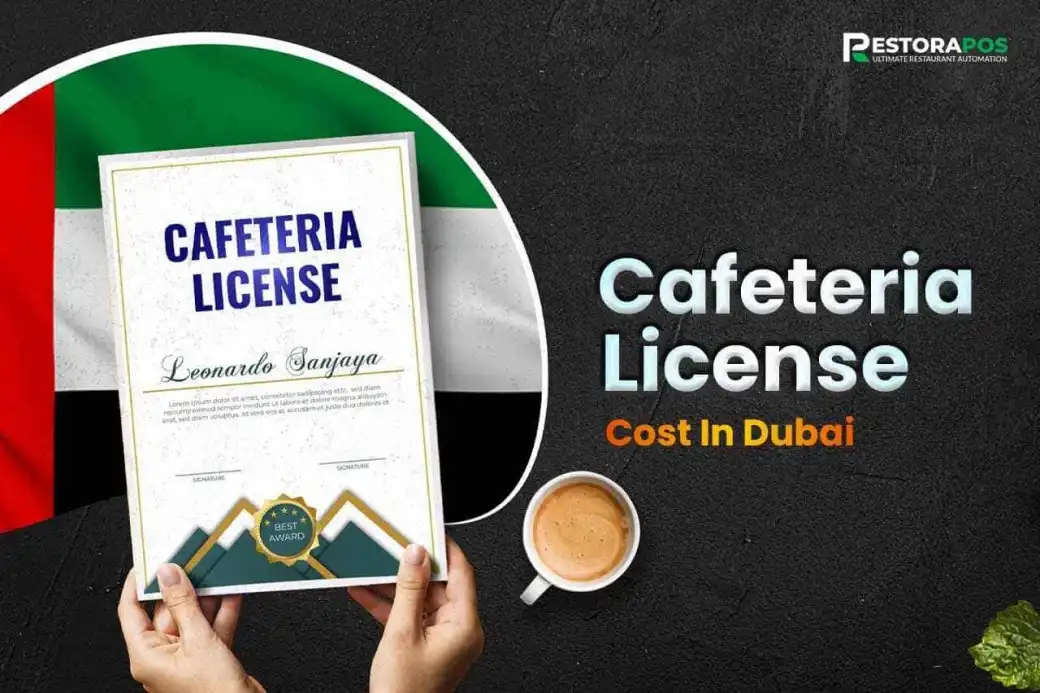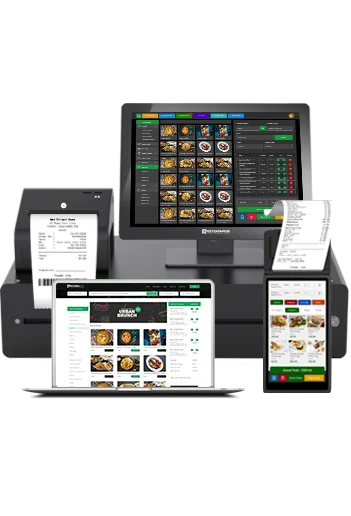Restaurant Business Profit Margin: Key Factors Explained
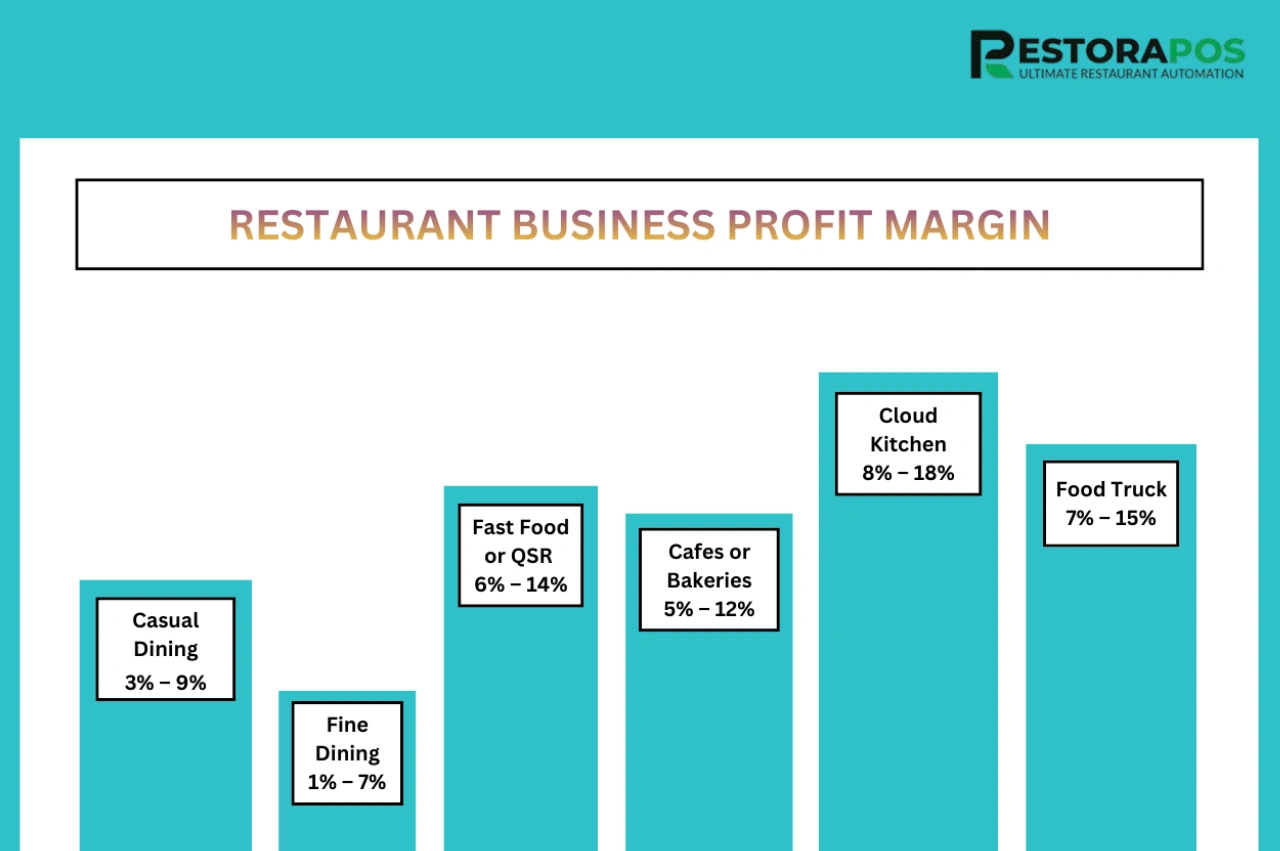
Restaurant business profit margin is a matter of concern for restaurant owners, investors, entrepreneurs, and managers. A successful restaurant business relies on how much profit is made annually. It is an essential part that every restaurant business focuses on.
A restaurant business goes through different types of challenges. Maintaining a good profit margin is one of those. It would be a wise decision to analyze restaurant profit margins efficiently.
Here, we provide the key factors, optimization guide, and complete breakdown of restaurant business profit margins. Walk with us and turn your restaurant business into a profitable one.
What is Restaurant Business Profit Margin?
The restaurant business profit margin is the percentage of revenue or money remaining after deducting all expenses. For example, utilities, rent, food costs, payroll, marketing, and other operational costs.
In clearer or shorter terms, it is the percentage of money a restaurant earns as profit. Every restaurant owner focuses on profit margin because it helps to measure the financial health of the business.
Moreover, the restaurant business profit margin provides a clear view of restaurant operational management efficiency. It also determines long-term sustainability in the market.
There is a formula to calculate profit margin. By following the formula, a restaurant can easily find out its profit margin.
Formula:
Profit Margin = (Net Profit ÷ Total Revenue) × 100
Types of Profit Margins in a Restaurant
What are the 4 types of profit margins? The 4 types of profit margins are gross profit margin, net profit margin, operating profit margin, and pre-tax profit margin. You can effectively measure how much revenue is turning into profit from the profit margin formula. So, you can easily calculate average restaurant profit per year by using the advanced restaurant POS software.

Here, we will provide a brief explanation of the 4 types of profit margin or food cost margin.
01. Gross Profit Margin
Gross profit margin is the percentage of remaining revenue after eliminating the cost of goods sold, for example, food ingredients or beverages. It shows how effectively a restaurant is producing its products and selling them. With the help of gross profit margin, you can compare the performance of your restaurant operation or to competitors.
Formula:
Gross Profit Margin = [(Revenue – COGS) ÷ Revenue] × 100
Example:
Suppose your restaurant makes $100,000 sales and COGS is $40,000
Gross Profit Margin = (100,000 – 40,000) / 100,000 × 100 = 60%
This means that after paying for food, you keep $60 out of every $100 earned.
02. Net Profit Margin
Net profit margin is the percentage of remaining revenue after deducting all the costs, like food costs, labor, utilities, tax, marketing, rent, etc. With the help of net profit margin, restaurant businesses can see the actual and real profitability of the business. It is useful for the long run and for taking decisions for further investment.
Formula:
Net Profit Margin = (Net Profit ÷ Total Revenue) × 100
Example:
Suppose your restaurant earns $100,000 and total expenses are $90,000:
Net Profit = $100,000 – $90,000 = $10,000
Net Profit Margin = (10,000 ÷ 100,000) × 100 = 10%
This means for every $100 earned, the business retains $10 in profit.
03. Operating Profit Margin
Operating profit margin is the remaining revenue a business makes from core operations by paying operating costs. And the operating costs include rent, utilities, labor, administration, and marketing costs. It helps to effectively measure the day-to-day business conditions. Moreover, it provides a clear view of the business conditions before paying taxes or VATs.
Formula:
Operating Profit = Gross Profit – Operating Costs
Operating Profit Margin = (Operating Profit ÷ Total Revenue) × 100
Example:
Suppose your restaurants make Revenue: $100,000, Gross Profit: $60,000, and Operating Costs: $40,000.
Operating Profit = $60,000 – $40,000 = $20,000
Operating Profit Margin = (20,000 ÷ 100,000) × 100 = 20%
This means your restaurant keeps 20% of its revenue as profit from core operations.
04. Pre-Tax Profit Margin
Pre-tax profit margin is the revenue a business makes before paying income taxes. It provides the visualization of the business profit when you do not provide taxes. It is essential for the financial analysis and business potential across different countries. As different countries have different tax rates.
Formula:
Pre-Tax Profit = Total Revenue – All Expenses (except income tax)
Pre-Tax Profit Margin = (Pre-Tax Profit ÷ Total Revenue) × 100
Example:
Suppose your restaurant makes revenue of $100,000 and total expenses (except tax) are $85,000.
Pre-Tax Profit = $100,000 – $85,000 = $15,000
Pre-Tax Profit Margin = (15,000 ÷ 100,000) × 100 = 15%
Before paying taxes, the company retains 15% of its revenue as profit.
Why Profit Margin Matters in the Restaurant Industry
Restaurant business profit margins are one of the core financial metrics that help to understand your business's actual profit and conditions. Suppose your restaurant has high foot traffic or high sales, but it does not necessarily mean you have a high profit margin. There are many other factors that influence the profit margin.
Let's find out why profit margin matters for restaurants.

Measures True Financial Health
To find out the true financial statement of your business, you must know the profit margin. Most of the time, a high revenue is not the actual profits or success.
A profit comes from eliminating all the necessary costs. It shows the actual earnings from the restaurant business, and it ensures your business growth and stability.
So, if you are a restaurant business owner, you must continuously measure your profit margin.
Helps Control Costs Effectively
The restaurant business faces a major problem like fluctuating costs. It is connected to the ingredients' price, labor cost, utilities costs, etc. As a result, the operating cost and the other costs vary from time to time.
So, if you get higher sales but still know the profit margin can be lower due to price changes. By tracking regular profit margins, restaurants can easily identify rising food costs, wastage issues, overstaffing, etc.
Guides Pricing and Menu Decisions
Profit margins are another great indicator that helps in deciding many prices. With the right profit margin, restaurants can easily determine that the menus are priced correctly.
If you find any items that are low priced, then they need a price adjustment. Moreover, a proper margin is more helpful for portion control, ingredient substitution, and the removal of unnecessary menus.
Supports Better Cash Flow Management
A healthy profit margin is essential for better cash flow management. It ensures you have enough cash to make your payments, like salaries, rent, suppliers, etc. Moreover, the restaurant owners can go for further investment with better cash flow.
Attracts Investors and Lenders
A strong profit margin plays an important role in attracting investors. It provides secure financial support from lenders. When investors see stability, efficiency, and growth potential, they want to put their money into businesses.
When a restaurant consistently shows a healthy margin, it signals that the business is well-managed, cost-efficient, and capable of generating sustainable profits.
Ensures Long-Term Sustainability
For a restaurant to survive over the long run, a high profit margin is essential. Even busy restaurants can collapse if their margins are poor in the competitive foodservice business industry.
The profit margin acts as a buffer against rising food prices, seasonal slowdowns, and unexpected expenses. A restaurant that has healthy margins will be able to pay its employees, pay operational costs, and continue to provide high-quality service even in critical circumstances.
Additionally, they allow the company to reinvest in enhancements without jeopardizing its stability, including better equipment, menu changes, employee training, or marketing.
Average Restaurant Profit Margins
Due to the high costs of food, labor, and operations, restaurants usually have lower profit margins than many other industries. Restaurants often have margins of 3% to 10%, depending on their cost-effectiveness and business strategy. Here we will provide the profit margin for different types of restaurants.
|
Restaurant Type |
Average Profit Margin |
|
Casual Dining |
3% – 9% |
|
Fine Dining |
1% – 7% |
|
Cloud Kitchen |
8% – 18% |
|
Food Truck |
7% – 15% |
|
Cafes or Bakeries |
5% – 12% |
|
Fast Food or QSR |
6% – 14% |
The restaurant profit margin comparison table demonstrates the differences in profitability across various business types. Due to increased labor, rent, and service-related costs, fine dining restaurants continue to have the lowest margins (1–7%).
On the other hand, due to lower staffing requirements and quicker turnover, quick-service restaurants have marginally higher profits (6–14%). Because of the simplified menus and high-margin beverages, cafes and bakeries are able to retain moderate margins (5–12%).
Due to lower overhead expenses, food trucks are efficient with margins of 7–15%. Moreover, with the elimination of eating area expenses, cloud kitchens have the highest margins (8–18%).
Restaurant owners can easily grasp their company's position by using these standards.
How to Calculate Restaurant Profit Margin
Restaurant owners can determine how much real profit is left over after all costs are paid by calculating the restaurant profit margin. To calculate net profit, total expenses are subtracted from total revenue. At this point, net profit is then divided by revenue and multiplied by 100.
The restaurant's actual financial success and efficiency are displayed by this percentage. Here are the ways to calculate the food profit margin formula.
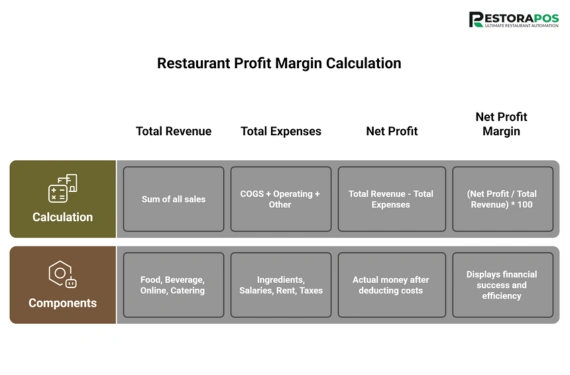
01. Calculate Total Revenue
First, you have to calculate your total revenue. Total revenue includes money earned from all sales. It includes,
- Food sales
- Beverage sales
- Online/delivery sales
- Catering, etc.
Formula: Total Revenue = Sum of all sales
02. Calculate Total Expenses
Now, you have to calculate all the expenses. And, in the restaurant business, total expense falls under three categories.
COGS (Cost of Goods Sold)
- Ingredients
- Beverages
- Packaging, etc.
Operating Expenses
- Staff salaries & wages
- Rent
- Utilities (gas, electricity, water)
- Marketing
- POS subscription
- Licenses & permits
- Maintenance & repairs
Other Expenses
- Taxes
- Loan payments
- Depreciation
- Insurance
Formula: Total Expenses = COGS + Operating Expenses + Other Expenses
03. Calculate Net Profit
Now, you have to calculate the net profits. It tells you about the actual money or cash that exists after deducting all the costs.
Formula: Net Profit = Total Revenue – Total Expenses
Suppose your expenses are higher than your revenue; then you will get a net loss. On the other hand, if your expenses are lower than your income, then you will get good profits.
04. Apply the Profit Margin Formula
Now, you have all the value, like net profit and total revenue. You can easily find your restaurant business's profit margin by applying the formula.
Formula: Net Profit Margin = (Net Profit ÷ Total Revenue) × 100
Example:
Let's calculate the average restaurant profit per month where your,
Monthly Revenue:
- Total Sales: $80,000
Monthly Expenses:
- COGS: $35,000
- Labor: $25,000
- Rent & Utilities: $7,000
- Other Expenses: $3,000
Total Expenses = $70,000
Net Profit = $80,000 – $70,000 = $10,000
Profit Margin = ($10,000 ÷ $80,000) × 100 = 12.5%
Your restaurant profit margin is 12.5%.
Key Components Affecting Restaurant Profit Margin
A number of important variables, such as food costs, labor costs, menu prices, and overall operating efficiency, affect restaurant profit margins. Moreover, waste, inadequate staffing, or high ingredient costs can rapidly lower profitability. Restaurants can maintain healthy margins and enhance their long-term financial success with the use of technology.
Here, we will find out the key components that influence restaurants' profit margins.
1. Food Costs (COGS)
Food costs are directly impacted by waste, spoiling, portion management, and ingredient prices. Profit margin is lowered by high COGS; hence, effective inventory control is important.
2. Labor Costs
Profit margins are greatly impacted by wages, training, overtime, and staffing levels. Inadequate scheduling or overstaffing can lower profitability.
3. Operating Expenses
The entire cost is significantly influenced by rent, utilities, software, cleaning supplies, equipment maintenance, and other overhead. Higher profit margins are typically the result of lower overhead.
4. Menu Pricing
Inaccurate pricing might reduce revenue. Prices must take into account consumer demand, competition, and food prices. High-margin products contribute to increased overall profitability.
5. Portion Control & Waste
Higher COGS and lower margins result from inconsistent portions or excessive waste. Losses are decreased by using standard recipes and maintaining kitchen discipline.
6. Supplier Management
You may reduce ingredient costs and stable margins by negotiating prices, selecting reputable suppliers, and purchasing in quantity.
7. Customer Volume & Table Turnover
The entire profit margin is increased by more clients and quicker turnover, which boosts income without appreciably increasing costs.
8. Technology & Efficiency
POS systems, inventory software, and automation are examples of tools that improve margins by lowering errors, controlling waste, and streamlining operations.
How to Improve Restaurant Profit Margin
How to increase profit margin? Reducing expenses and boosting operational effectiveness are the first steps in raising a restaurant's profit margin. By concentrating on high-margin items, maintaining their menu, and improving inventory control, restaurants can increase their profitability. Lowering costs can also be achieved by negotiating with suppliers, managing staff schedules based on demand, and maintaining portion control.
Here we will give a detailed and effective strategy on how to improve restaurant profit margin.
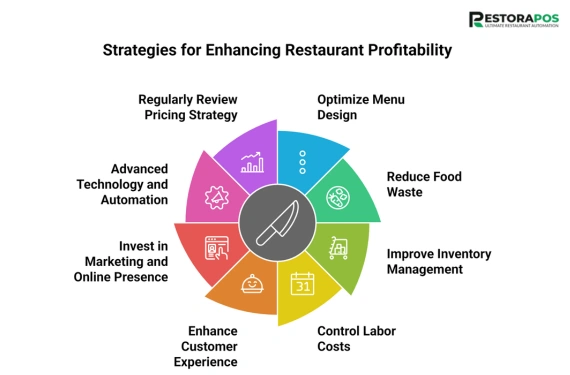
01. Optimize Menu Design
Profit margins can be greatly increased by a well-designed menu. Restaurants can encourage patrons to select more profitable things by finding and showcasing their best-selling, high-margin dishes. Eliminating low-profit or slow-moving dishes also lowers waste and boosts kitchen productivity.
02. Reduce Food Waste
One of the biggest threats to business is food waste. Waste can be reduced by using appropriate inventory tracking, portion control, and precise demand forecasts. Using leftover ingredients creatively in specials can further reduce losses.
03. Improve Inventory Management
You can avoid overstocking and always have what you need with effective inventory management. By utilizing real-time tracking technologies, doing routine stock checks, and negotiating better prices with suppliers to lower the cost of items, restaurants can increase their margins.
04. Control Labor Costs
One of the biggest costs for any business is labor cost. When schedules align with client demand, there is less needless personnel during slack hours, which increases profitability. Additionally, cross-training workers reduces labor-related expenses while increasing production.
05. Enhance Customer Experience
Improved customer satisfaction raises sales and encourages repeat business. Personalized interactions, quicker table turnover, and consistent service quality all contribute to customer loyalty. Customers that are happy spend more money and come back more frequently.
06. Invest in Marketing and Online Presence
Effective marketing helps draw in new clients and keep hold of current ones. Consistent traffic is produced by social media, internet advertising, and loyalty programs. Stronger revenue is also a result of active customer interaction and a well-optimized website.
07. Advanced Technology and Automation
Automated inventory tools, digital reservations, online ordering, and point-of-sale systems all are important to improve restaurant operations. Technology increases accuracy, decreases errors, and saves time, all of which boost profit margins..
08. Regularly Review Pricing Strategy
Pricing must be modified in accordance with changes in restaurant expenses. Maintaining good margins can be achieved by examining menu prices, monitoring competition rates, and making sure that pricing accurately reflects labor and ingredient expenses. Overall profitability can be greatly increased by small, well-timed price increases.
Frequently Asked Question (FAQs)
Here are the most frequent questions regarding restaurant business profit margin.
1. Why Are Restaurant Profit Margins So Low?
Restaurant profit margins are low because restaurant operating costs are high, like food, labor, rent, and utilities. Moreover, the competition of the restaurant business is much higher than other industries. So, small price changes, food waste, and rising ingredient costs lower profits. It makes it hard for restaurants to maintain wide margins.
2. Which Type of Restaurant Is Most Profitable?
Fast-casual restaurants are the highest profit margin restaurant business and generally the most profitable. It has minimal labor costs, simpler menus, faster turnover, and higher margins compared to full-service dining or other types of restaurants. So, fast casual restaurants are the most profitable restaurant in the world.
3. Is 40% Profit Margin Good?
Yes, a 40% profit margin is very good for a restaurant.
Most of the restaurants typically see margins between 3% and 20%, so a 40% margin is above industry averages, and it indicates exceptional cost control, pricing, and operational efficiency.
Conclusion
Not only is calculating your restaurant business profit margin an accounting duty. It acts as the basis for more intelligent business decisions. You can get a clear image of how well your restaurant is running by routinely monitoring revenue, expenses, and net profit.
You can get real-time profitability data, minimize errors, and automate a lot of the tracking with technologies. It becomes easier to find out issues early, enhance pricing, and control operations.
Restaurant owners can boost the business sales if the margins are tracked more regularly. In summary, knowing your profit margin gives you the ability to manage a restaurant business that is more reliable, profitable, and scalable.
